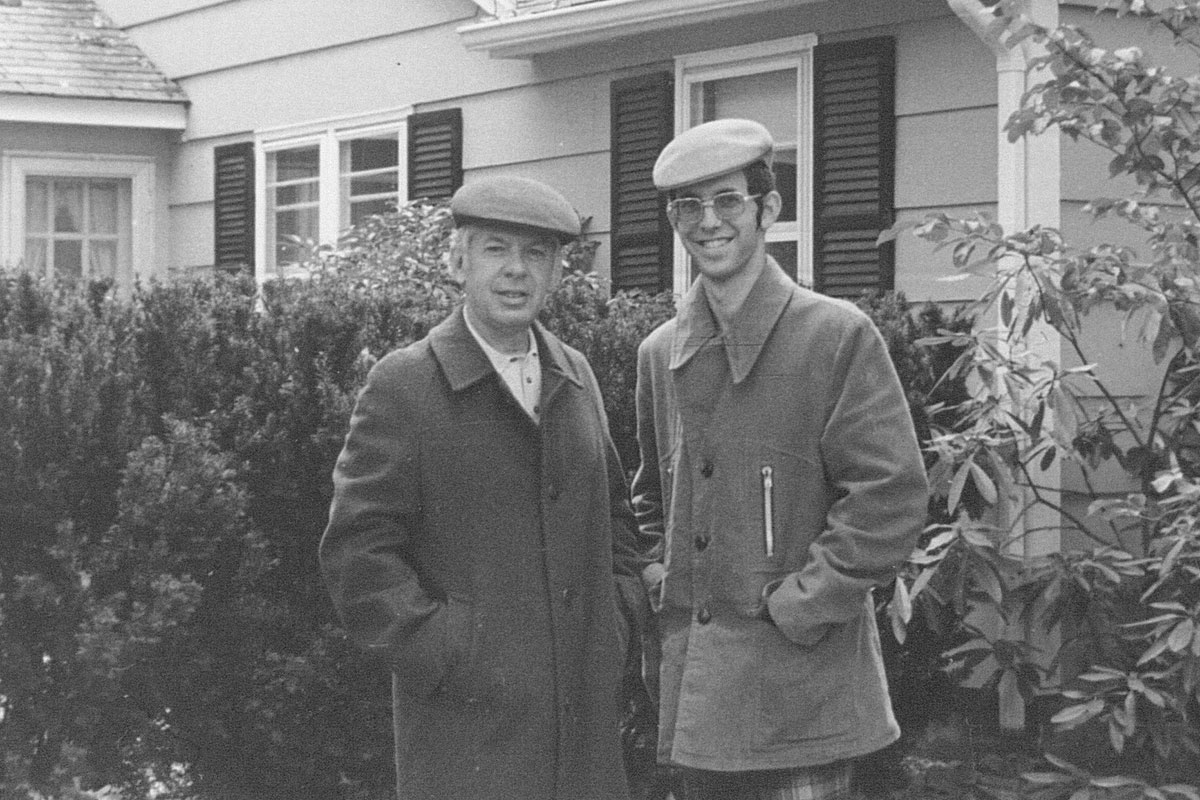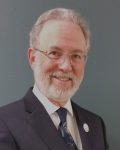
He most likely has been at UConn Health longer than you have. Dr. Alan Lurie, professor and chair of the UConn School of Dental Medicine Division of Oral and Maxillofacial Radiology, recently was recognized for 45 years of service. UConn Health is the only place he’s ever worked full-time. He started as an assistant professor of oral and maxillofacial radiology and has been division chair for the last 28 years. Dr. Lurie lives in West Hartford with his wife, Dr. Susanne Shrader, who’s a UConn School of Medicine alum. They have three adult children and three grandchildren.
How has your role here changed over the years?
I was here for almost 20 years, most of that time spent being a scientist working on radiation cancer induction and interaction with chemicals. I did some teaching and clinic coverage, but I was mainly in the lab. And then in 1990, the person who had been the chair the whole time, Allan Reiskin, left the institution, and they asked me if I would take it over. I had to think about that, because when you do that you can’t be a lab scientist anymore. I accepted that, and I saw a shift in my research over to collaborative clinical and translational research, and then got involved with administration of research programs, of oral biology, of the DMD-Ph.D. program, and before that the residency Ph.D. program, then known as the dentist-scientist award. I shifted gears frequently.
Dr. Alan Lurie
 Favorite book:
Favorite book:
The Lord of the Rings
Favorite author:
David Brin
Favorite musical:
Tie between “My Fair Lady” and “West Side Story”
Favorite actress:
Kate Beckinsale
Favorite place to visit:
The Brazilian Pantanal
Person I’d most like to meet:
Barack Obama
Something about me that my younger self would never believe:
I like birding, and I have parrots living in the house with me: Prestwick (military macaw) and Ava (African grey parrot).
What would you say are the biggest changes that have taken place in the dental school over 45 years?
When I first came here, there wasn’t a CT (computed tomography) machine in the institution. I don’t believe there was one in the state. There’ve been so many big changes. CT shows up, MR (magnetic resonance) shows up, nuclear medicine shows up, PET (positron emission tomography) scans, molecular imaging, cone beam CT, all of these things didn’t exist, and they’re still showing up. You have to be very nimble to be in radiology because it’s advancing so rapidly, and I think that the advances over the next quarter of a century are just going to be astonishing.
When I arrived here, this dental school was unique in the history of dental schools. It was truly creating a physician stomatologist, scientifically based. The interaction between the medical and dental wings of this institution was very very close, very very intense. We were really in a partnership. It was very small. I arrived here after the first class graduated, and I think there were eight people; and then the next class, the first class I taught, I think there were 12 people, and the medical school was about 24 people. The faculty was small. Everybody knew everybody. It was very intimate, what today would be called evidence-based (back then it was called science-based) medicine and dental medicine. The student body has always been a powerhouse. We’ve always had a very strong faculty. We’ve almost always been on top of technological advances.
Probably we have been best known for our emphasis on the science behind imaging and the safe imaging of patients. We’ve had a lot of research on carcinogenesis and extrapolation out to risk, and what are the safest practices and how do you teach the safe practices. I think that’s had a fairly significant influence on the way radiology is taught and practiced.
When you first started in 1973, if someone told you that you’d be here for 45 years, how would you have reacted?
I can answer that in one word: disbelief.
For the first several years here, I was fully intending to return to my home state of California. However, over time, I really got entrenched in this area, and I became more and more committed to this institution, more and more committed to my personal health care providers, committed to giving my children a stable environment and school system and friends. I just got to like it more and more.
What motivates you to keep coming to work at the same place every day for as long as you have?
Great students, great residents, terrific staff and faculty colleagues, and an interesting job that’s quite variable in its texture. I can control its shifts from clinical activities to teaching to doing collaborative research and overseeing other people doing research and helping them, and participating in national activities. It’s quite variable and that keeps it interesting.
What are your plans moving forward?
I’m going to keep doing what I’m doing. I like it too much. I’m having too much fun. There’s something new happening in my field like every week, so I’m just waiting to see the next thing.
What makes the UConn School of Dental Medicine so successful and highly regarded?
It’s a variety of things. I think the smallness is a great strength, because it lets you be very selective in your student and resident selection. It also lets you be selective in your faculty. I think we always had a very strong faculty. We still have many close relationships with people in the medical school and in the hospital, and so there’s a good deal of interactive teaching in patient care and residency training. The science that’s coming out of the dental school is still a leader in the world. We have world-renowned scientists and leaders through the dental school, and I think with the addition of the Biomedical Engineering Department and the sharing between the schools and with Storrs has the potential to become something really tremendous, because that’s playing to our strengths. Interactions in imaging and in medically complex patients and in cancer patients and especially in bone and musculoskeletal, are ongoing major strengths of this place.
What do you like to do when you’re not at work?
I’m a serious classical pianist. I have been all my life. That was my other career choice. I was a guest artist in the Casals Festival in 2015. I run a chamber music trio (we’ve been together over 20 years now) and we play annually on commencement weekend here. Our name is The Noteworthy Ensemble; my wife plays violin and viola, and Gwen Winkel, the music director for the Simsbury school system, plays clarinet and ancient wind instruments. My parents were both professional musicians, so I grew up in a household of classical music, and I’ve been at the keyboard since I was 6.
I love golf. I’m a competent player. I used to be a pretty good player, but it’s hard to be good when you’re 72.
I’ve done quite a bit of birding around the world, in Japan, Europe, South America, the U.S., and in New Zealand (my daughter lives in New Zealand). I’ve led a few birding-based eco tours in Latin America. I love birds. There are a couple of birds that have been living in our home for over a quarter of a century.
I’m a big sports fan. My favorite team is the Patriots, and my second favorite team is – most people won’t know what it is –the All Blacks, the national rugby team of New Zealand, probably the greatest dynasty in the history of team sports. I like all sports, I’ll watch any of it.
The other thing I love is science fiction, movies and books. I’ve been a member of the Science Fiction Book Club since two years after it was founded in 1956. I’ve been a member for 60 consecutive years and I’ve read hundreds if not thousands of science fiction novels and seen an awful lot of science fiction movies. My favorite is Godzilla. I was interested in radiation from the first time I saw Godzilla, and I was only 8 when I saw it. I watched science fiction and horror movies as a kid, and almost all of them were radiation – making things big, making things small, making things blow up – but it was always radiation. And in dental school I found out that there was a real science of radiation. That headed me into being a radiologist.